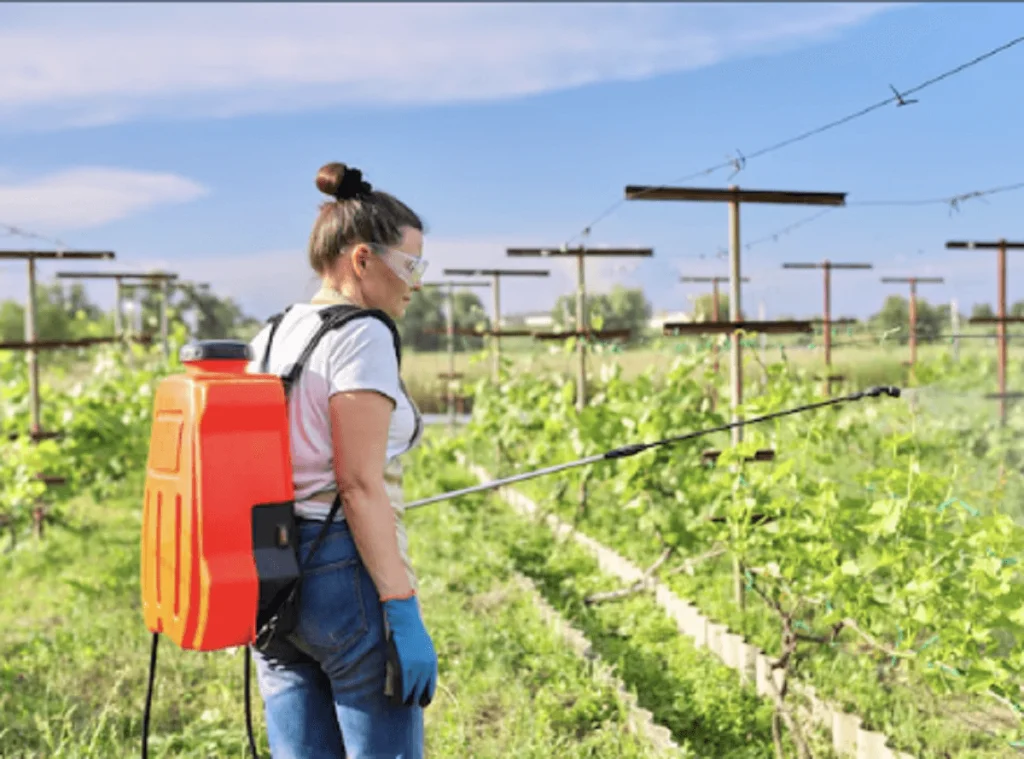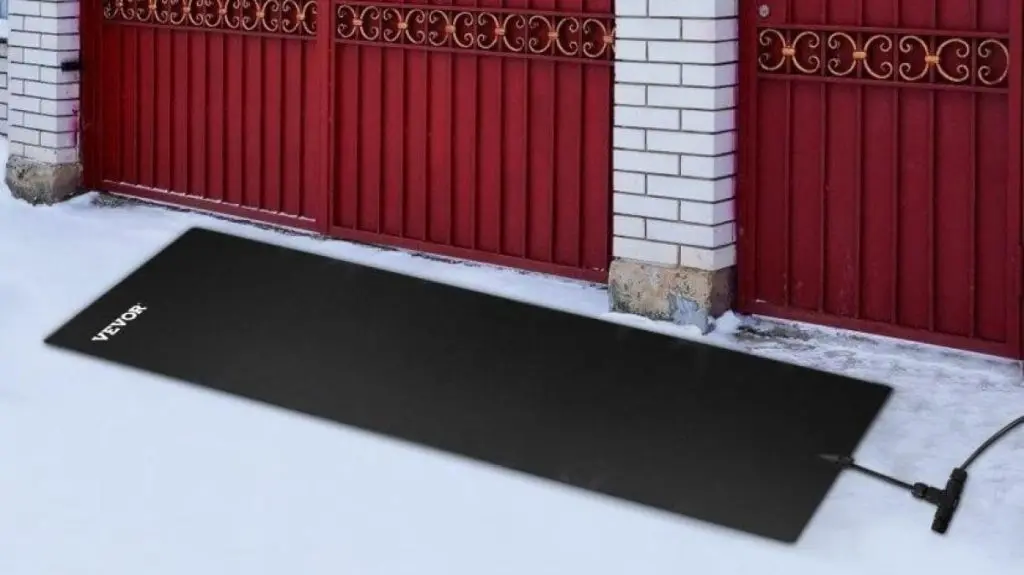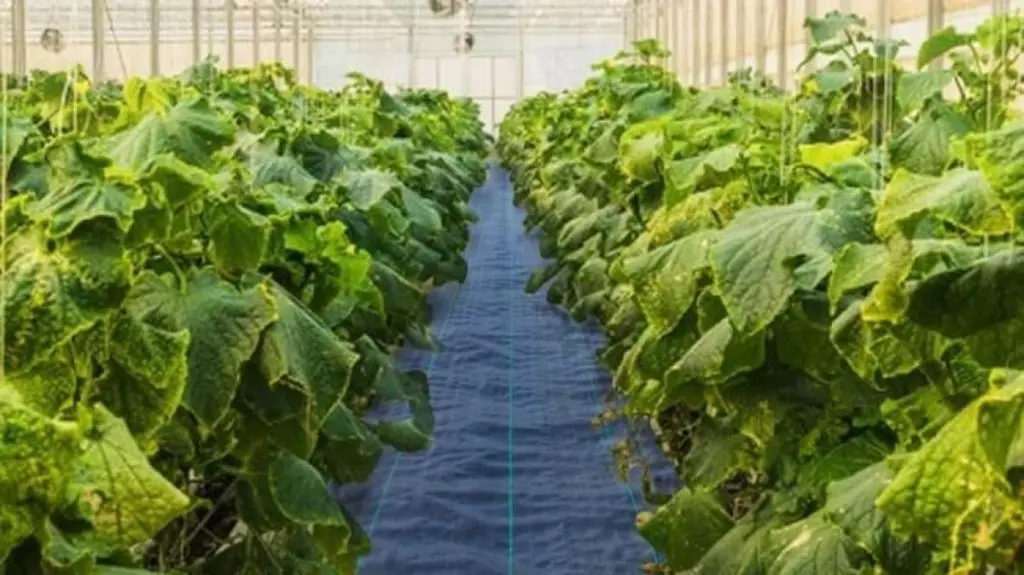Backpack sprayers are without a doubt incredibly useful when you need to apply pesticides, fungicides, fertilizers, and other chemicals in gardens. They are functional and help with the process of getting rid of unwanted in the garden quickly and efficiently.
Choosing a spray backpack that adequately meets your gardening needs is crucial for every serious gardener. To ease the burden of endlessly searching on what’s the best backpack for you, we curated this piece.
Here, we’ll show you the different types of backpack sprayers and the factors to consider when making your choice. We’ll also take you on a journey of the pros and cons of the different types of backpack sprayers and the ideal situations for using each one.
Table of contents
- Understanding Different Types of Spray Backpacks
- Choosing the Right Tank Capacity and Material
- Evaluating the Pump Mechanism
- Selecting the Right Nozzle Types and Adjustability
- Prioritizing Comfort and Ergonomics
- Additional Features and Accessories
- Maintaining Your Spray Backpack for Longevity
- Why VEVOR Spray Backpack Meets Your Needs
- FAQs About Spray Backpacks
- Final Thoughts
Understanding Different Types of Spray Backpacks
There are different types of backpack sprayers with different capacities and sources of power. They include manual, battery-power, and gas-powered backpack sprayers. Let’s discuss them in detail below.
Manual Water Backpack Sprayers
A manual spray backpack operates using a manual pump. This means you’d be required to use a lever or handle to pump out the sprayer’s contents.
Pros
- They are relatively affordable compared to other options.
Cons
- Requires exerting physical force
- Inconsistent spray pressure
This makes them suitable for simple home gardening needs in small areas between 75 and 100 square feet that don’t require extensive spraying.
Battery-Powered Water Backpack Sprayers
Battery-powered spray backpack often have rechargeable batteries that power the spray pumps. This ensures consistent pressure and spray output.
Pros
- They require less physical labor
- Suitable for longer periods of use when compared to manual backpack sprayers.
Cons
- They are more expensive to obtain
- They require regular battery maintenance
- Require access to regular power supply to keep batteries charged
We recommend using battery-powered backpack sprayers when working on larger areas that are more than 1000 square feet. Just ensure that there is a nearby electricity supply for regular battery recharge.
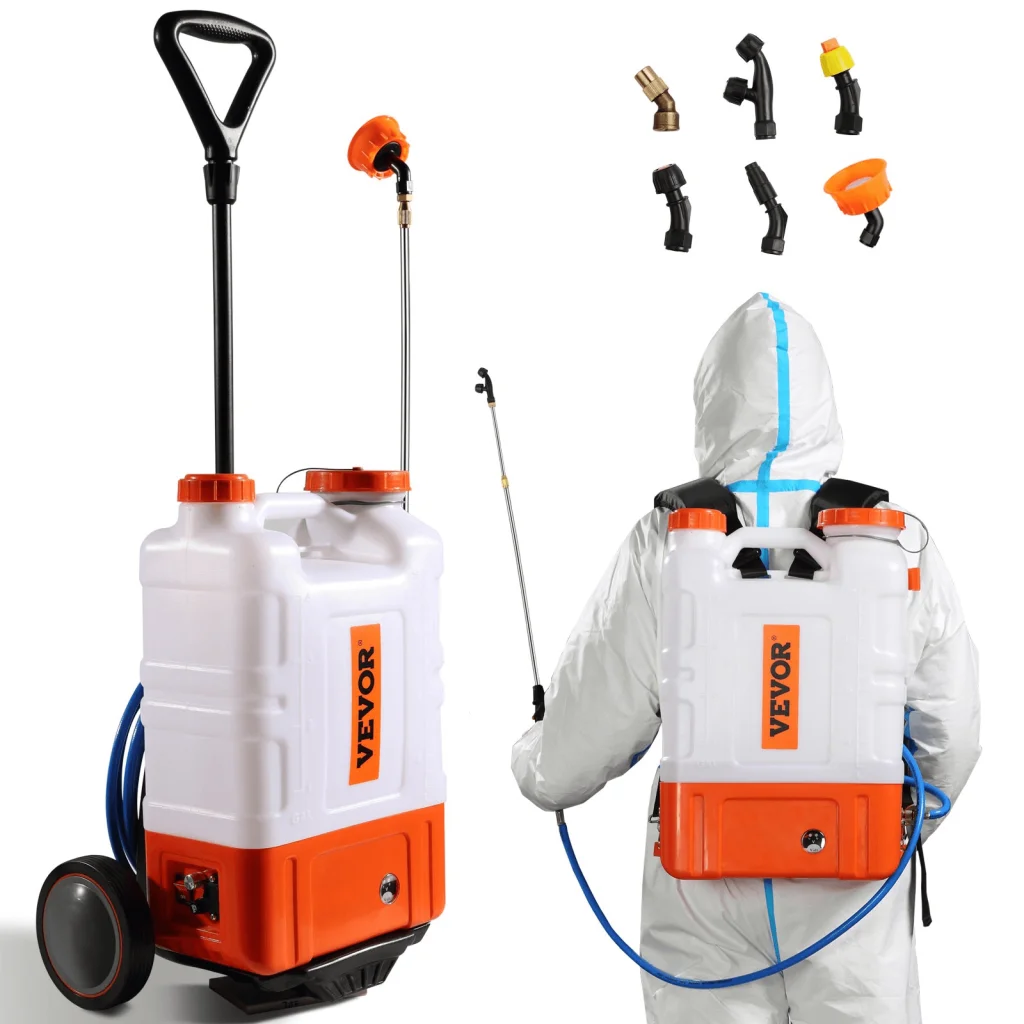
Gas-Powered Water Backpack Sprayers
Gas-powered water spray backpacks can spray their contents with the aid of small engine-fueled petroleum products. The engine present offers great pressure power and consistent spray power.
Cons
- Can be quite noisy and heavy
- They require regular maintenance and fueling.
We recommend them for large agricultural fields and areas that require continuous spraying. It is a great option for commercial use.
Choosing the Right Tank Capacity and Material
Now that you’re familiar with the different sizes of spray backpacks, it’s time to discover how to choose the right tank capacity and material for your needs.
Tank Capacity
Your spray backpack tank capacity directly affects how much liquid it can hold. It plays a role in how long you can use it before you have to refill it.
There are usually three sizes of spray backpack tanks.
Small
Small-sized spray backpacks can only hold about 2 gallons (7.57 l) of liquid. They are known to be lightweight and compact. However, they will require more frequent refilling, making them best suited for use in small gardens of less than 100 square feet (ca. 9 m²), flower beds, and small vegetable patches.
Medium
Spray backpacks in this category can hold about 2-4 gallons of liquid. They are known to balance functionality and capacity well and are suitable for average-sized gardens that only require moderate spraying because they are more than 100 square feet but less than 1000 square feet.
Large
With large capacity spray backpack tanks, you get a backpack that can hold 4 gallons (ca. 15 l) or more of liquid. This category of backpacks is large enough to cater to the spraying needs of large fields and landscapes.
With their large capacity, refilling does not need to be done as often as smaller-sized sprayers. This makes them a good choice for commercial purposes.
Tank Material
The tank material plays a crucial role in determining what type of liquid the tank should hold.
Tank materials can be made from either
- Plastic
- Stainless steel
Plastic
Backpack sprayers made from plastic tend to be lightweight and cost-effective because plastic is generally more affordable than other materials.
Certain types of plastic like High-density polyethylene (HDPE) plastic are resistant to a wide range of chemicals, making them a great choice for tank material. However, plastic tends to degrade over time. It is also less durable than stainless steel.
Stainless Steel
This type of material is stronger and more durable than plastic. However, it is also heavier and more difficult to carry around. Backpack sprayers made of stainless steel are more resistant to chemical degradation and corrosion and, therefore, suitable for long-term use.
Due to their durability, they are often more expensive than sprayers made of plastic.
Other Materials
Besides plastic and stainless steel, backpack sprayers can also be made from other materials like fiberglass or polyethylene.
Fiberglass backpack sprayers can be durable and moderately chemically resistant. However, they are more expensive than plastic and cheaper than stainless steel sprayers. They also have the potential to be brittle over time.
Polyethylene backpack sprayers are chemically resistant, flexible, and durable. However, they can degrade over time due to prolonged exposure to UV rays. They can be more expensive than plastic tanks but are cheaper than stainless steel tanks.
Durability and ease of cleaning
Regardless of the type of material a spray backpack is made of, you must carry out regular cleaning. The chosen backpack spray must also be able to stand the test of time to remain functional for months or even years without getting damaged. You don’t want to have to replace your sprayer every month. Instead, you need one that can last for a while.
Before you choose a backpack sprayer, consider the type of material it is made from and how easy cleaning it will be. Choose a sprayer that allows you to easily access the tank to carry out deep cleaning whenever necessary.
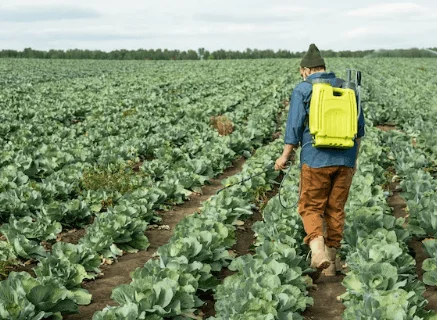
Evaluating the Pump Mechanism
Another crucial factor you must consider when choosing backpack sprayers is the pump mechanism. This affects the manner and speed with which you will spray the tank’s contents. Pump mechanisms usually differ between manual pumps and motorized pumps.
Manual Pumps
Manual pumps require you to generate pressure by using your hands to operate a lever. They could either be handheld or piston.
- Handheld pumps: These have a straightforward design, but they require continuous pumping, which can be exhausting.
- Piston pumps: On the other hand, piston pumps still require manual pumping, but they are capable of generating higher pressure than handheld pumps.
Motorized Pumps
These can either be battery-powered or gas-powered. They are known for their high spray output and consistent spray pressure which makes them more efficient than manual pumps. They are also more durable because they are fueled by batteries and gas.
Efficiency and Ease of Use
You also have to evaluate the efficiency of the pump mechanism and how easy it is to use. Check how easy it is to start up. Battery-powered sprayers usually have a switch for starting, while engine-powered models typically have a pull-cord mechanism. Of course, manual sprayers do not require any start-up mechanisms.
Recommended For Your Project
Selecting the Right Nozzle Types and Adjustability
Also, crucial in selecting a spray backpack is the spray backpack’s nozzle. This affects how the spray pattern and its effectiveness. Here we’d discuss nozzle types, spray patterns, and adjustability.
Common Nozzle Types
Different nozzle types will produce different spray patterns, adjustability, and efficiency of application.
There are typically three types of nozzles you can get when it comes to choosing backpack sprayers. They include;
- Fan nozzles: This type of nozzle produces a spray that fans out over a considerably wide area at a time. This wide, uniform spray is great for applying herbicides and pesticides. However, it can easily be displaced by strong winds.
- Cone nozzles: For a targeted spray, choose a cone nozzle. This type of nozzle produces a more focused spray that allows you to target specific areas during application. This spray pattern reduces waste but can be less effective for covering large areas of land at a time.
- Adjustable nozzles: These do not conform to specific shapes and, therefore, can be adjusted to suit the desired spray pattern. They are versatile and convenient nozzles that do not require you to change from one nozzle to another during application. However, they can sometimes be a bit complex to operate.
Spray Patterns and Applications
You can also get different spray patterns, depending on the type of nozzle and sprayer you choose.
- Fine mist: This comes out as a fine, gentle spray that settles as a soft mist. It is ideal for applying products to delicate plants and seedlings and great for use in enclosed environments. Using this type of spray pattern in windy conditions is risky because it is susceptible to drift.
- Coarse spray: A coarse spray pattern comes out with heavier droplets that are less likely to drift. You can use this type of spray pattern for direct application to the soil for treatment and weed control.
- Targeted spray: This type of spray pattern is more precise than the previously mentioned two. It is great for spot treatment and targeted weed control.
Ease of Adjustment and Replacement
When deciding on the type of nozzle to pick, don’t forget to consider its ease of adjustment and replacement. Choose a nozzle that requires a simple twist or clock mechanism to remove.
Additionally, choose nozzles that are compatible with various sprayers. This allows you to easily replace the nozzle when it wears out without having to change the whole backpack sprayer.
Prioritizing Comfort and Ergonomics
What makes backpack sprayers a favorite among agriculturists and fumigators?
Its design.
It is designed to be worn as a backpack and carried around more efficiently than other sprayers. Therefore, before choosing one, you must consider how well it combines comfort and ergonomics.
Here are some important things to note:
Harness and Straps
Look at the harness and strap mechanism of your backpack sprayer.
Is it well-padded and adjustable? Does it look strong enough to carry gallons of liquid around without slipping off?
A good spray backpack should have wide padded shoulder straps made of durable material that doesn’t sink into your skin. It should also have additional chest and waist straps as an extra layer of security. The extra straps will also help you avoid back pain and exertion as you carry the spray backpack around.
Weight Distribution
Consider how well the spray backpack distributes the weight of the tank over your shoulders. You want a sprayer that provides you with a balanced sense of gravity and reduces the risk of injury to your back. Before you choose a sprayer, try it on to see how it feels on your back.
Ease of Carrying and Operating
The whole point of using a spray backpack is that you can easily carry it around while operating it. Look for sprayers with anti-slip handles that are easy to grip and transport from one location to another. They should also be made with breathable materials that do not cause discomfort to your skin while you carry them about.
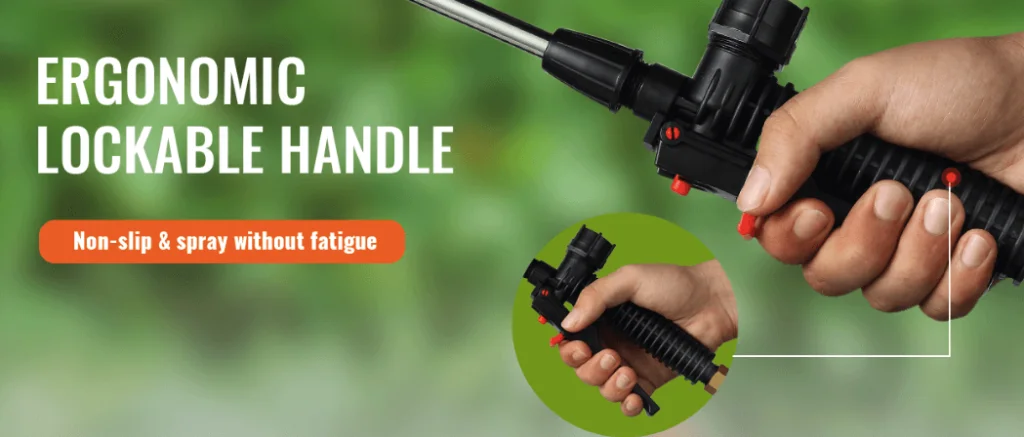
Additional Features and Accessories
The best backpack sprayers have all the additional features and accessories you need to work efficiently. This includes pressure gauges, extra nozzles, and control valves. Let’s briefly discuss them.
Pressure Gauges and Control Valves
A good spray backpack should have adequate pressure gauges and control valves. These are necessary for monitoring the pressure of the fluid in the tank. With control valves, you can easily adjust the flow rate and pressure, which gives you more control over the spraying and application.
Extra Nozzles and Extensions
The nozzle of your spray backpack will eventually wear out with time. As such, you need a sprayer that comes with extra nozzles to serve as replacements for worn-out or damaged nozzles. It is also important to have extra nozzles, as this will give you more options of spray patterns to choose from.
The spray backpack you choose should also have extensions that allow you to reach difficult areas, tall plants, or narrow spaces.
Compatibility with Herbicides and Fertilizers
Choose a spray backpack that can easily hold harsh chemicals without reacting negatively. It should be compatible with herbicides and fertilizers to avoid accidents. Always check the manufacturer’s label to ensure that the sprayer is safe to use with certain chemicals.
Maintaining Your Spray Backpack for Longevity
How can you extend the durability of your spray backpack to ensure it lasts for as long as possible? Here are some tips:
Regular Cleaning & Storage
After each use, empty the contents of your spray backpack and wash it thoroughly with clean water. Ensure you flush out any debris and residues and repeat the washing process until the water runs clear. Remove and clean the nozzle filters and allow all parts of the sprayer to dry before reassembling it.
When it comes to storage, avoid damp, humid places. Instead, store your spray backpack in a cool place away from direct sunlight. Take the batteries out too, if it is a battery-operated sprayer.
Inspecting and Replacing Parts
Carry out regular inspections to find any parts that are worn out or due for replacement. Examine the pumps, check for leaks in the body of the tank, and check the pump to ensure that its components are working as they should
Troubleshooting Common Issues
If your sprayer has clogged nozzles, soak it in warm water and use a needle to remove debris and dirt that might be causing it. If the pressure of the sprayer is unusually low, ensure that there are no leaks, clean the filters, and inspect the battery to make sure it is well charged.
Why VEVOR Spray Backpack Meets Your Needs
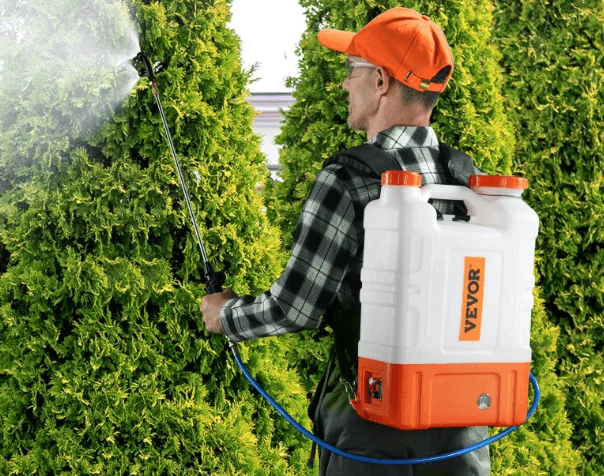
Now that you know all you should know about choosing backpack sprayers, how will you find the perfect brand?
VEVOR makes it easy.
The VEVOR spray backpack is a reliable choice that is equipped with an ergonomic design that can meet all your agricultural spraying needs. It is a battery-powered sprayer with a durable 7.2Ah Lead Acid battery.
What does this mean?
The VEVOR spray backpack can last for up to three to four hours without the need to recharge! It also has six nozzles and two wands, giving you the flexibility to choose any time of spray pattern you desire.
What’s more?
The user-friendly design of the VEVOR spray backpack combines comfort and portability, making it easy to carry without straining your back or shoulders.
The VEVOR spray backpack is a 4-gallon tank, meaning that it can get quite heavy to carry around after a while. However, it is equipped with wheels. So whenever you get tired, all you have to do is wheel it around! It also has an ergonomic handle designed to ease hand fatigue and spray for as long as you can without exhaustion.
A satisfied customer said, “I used this once so far, and it performed up to expectations. I’m an older guy, and the pull-around feature was very helpful. I have just over a half-acre of lawn and it never failed or lost power. According to the gauge, I could have done the yard again. I was broadcast spraying for weeds and such. Would recommend it.”
FAQs About Spray Backpacks
Q: How to choose the right water spray backpack for my needs?
When choosing a water backpack sprayer, consider the following factors:
- Tank capacity
- Tank material
- Durability
- Comfort and ergonomics
- Additional features and accessories
- Pump mechanism
- Nozzle type
Q: What safety precautions should I take while using a water backpack sprayer?
A spray backpack can get pretty heavy to carry around. Here are some safety precautions to consider:
- Use a water spray backpack with extra chest and waist straps
- Choose a sprayer that has a harness and thick, durable straps
- Choose a sprayer with anti-slip handles and easy lock mechanisms
- Choose a sprayer with an even weight distribution
Q: How often should I clean my water backpack sprayer?
It is advisable to clean your water spray backpack after every use. Dump out all the contents and wash thoroughly with clean water before leaving to air dry. Ensure it is thoroughly dry before assembling the components once more.
Final Thoughts
Choosing the perfect spray backpack can be an overwhelming process due to the many factors you have to consider. However, we’ve simplified the process here. The tank material durability, comfort, ergonomics, pump mechanism, nozzle type, and tank capacity are all crucial to selecting the right backpack sprayer for your needs.
Look for backpack sprayers that are equipped with extra nozzles and extensions for more efficient spraying. Plus, check the manufacturer’s label to ensure that it is compatible with various chemicals.
If you want to make your spray backpack last for a longer period, carry out regular inspections to enable you to catch any faults before they lead to a safety hazard. You can easily troubleshoot common issues like clogged nozzles by soaking and washing them with warm water.
For the perfect spray backpack that combines ease of use, functionality, and efficiency, choose the VEVOR Backpack Sprayer.
Join the bandwagon of many other customers who have used the VEVOR spray backpack and find it to be just what they need.
Try VEVOR today!

